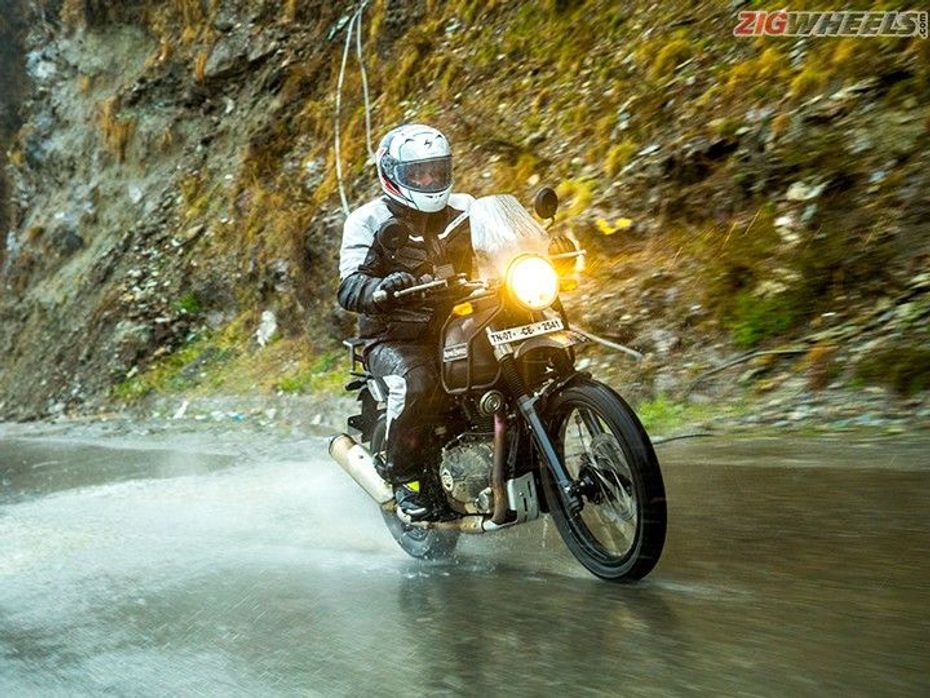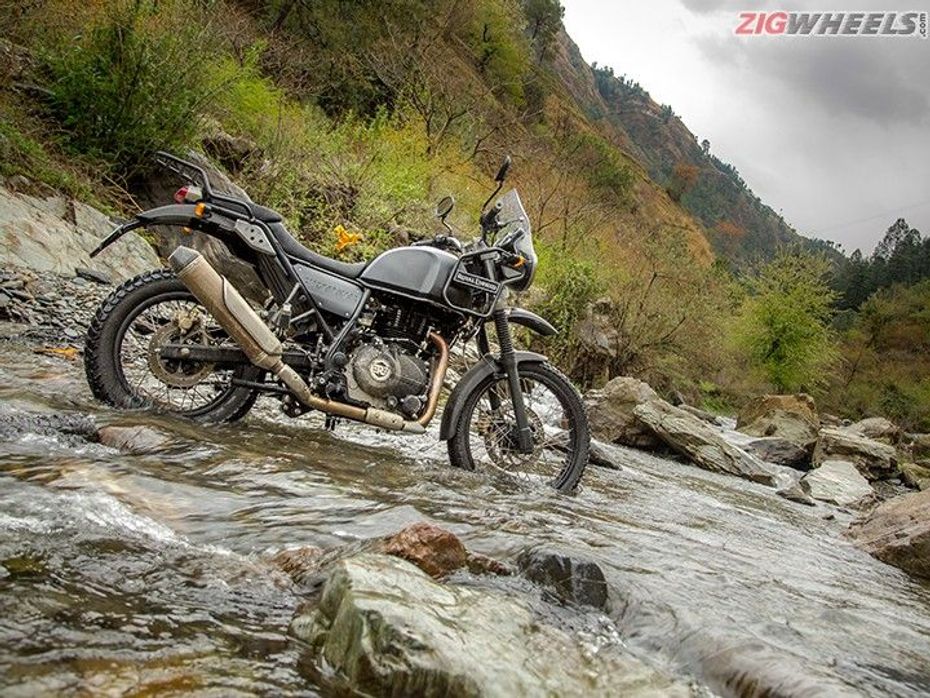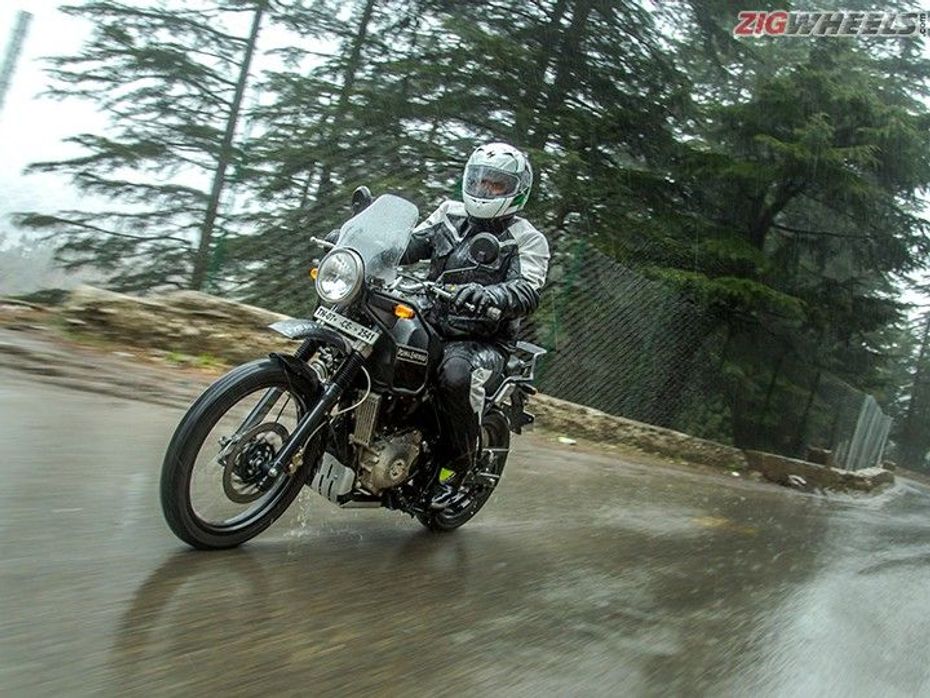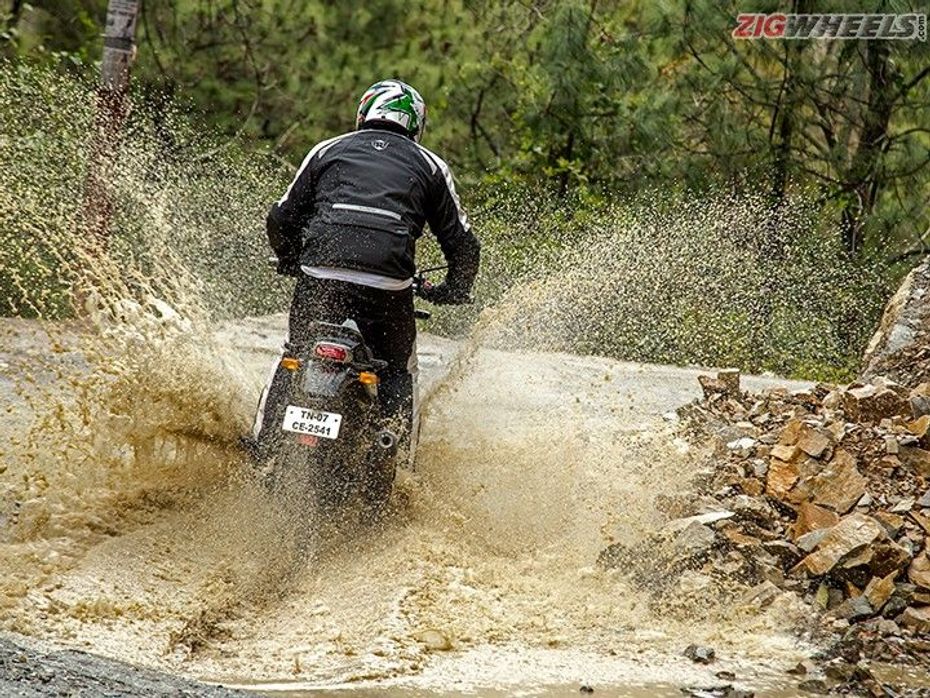
Royal Enfield Himalayan 650: 4 Reasons Why We Want One
- Jul 27, 2018
- Views : 51614


Monsoons invoke a bittersweet feeling among many riders. While it brings relief from the sweltering heat and eggs you to ride and savor the sweet smell of petrochor, it also comes with a number of challenges like flooded streets, low visibility, slippery roads, etc., that complicate riding. Here are five things to take into account before you embark on a ride in the rains: Also read: Motorcycle Group Riding Tips
Motorcycle Condition:

The proverb, ‘A stitch in time saves nine’ holds good for motorcycles as well. Regular servicing not only extends the life of your motorcycle, but also prevents your ride from falling apart when you are dependent on it the most. Ensure the tyres are inflated to recommended pressures and not generic values which petrol pumps use ever so often. Make sure the tread depth is adequate so that water molecules can escape through easily. Bald tyres result in aquaplaning which is extremely dangerous as this phenomenon involves the formation of a thin layer of water between the road and the tyre and prevents the tyre from coming into contact with the ground. Make sure there are no exposed wires as it could short circuit the electrical system. Also, check whether the brakes are working properly and check the brake-pad thickness and ensure it is not faded. The efficiency of faded brakes drops considerably and it is even riskier in rains. When not in use, cover up the bike using a waterproof bike cover so that the bike doesn’t get wet unnecessarily.
Low-Visibility Riding:

Rains often bring the visibility level down and the combination of rain and fog worsens it further. The first and the most important thing to do in such conditions is to ride slow. Keep left and maintain a steady pace so that it is easy to scan the road ahead for potholes, oil slicks or any other surprises. Make sure the headlight and the tail-light of the motorcycle are always on. This aids in visibility. Do not tail-gate as it is a recipe for disaster in case the vehicle in front of you makes any sudden and risky manoeuvres. Always keep at least two-car lengths of distance between you and the vehicle ahead. This way, you will have adequate reaction time in case anything untoward happens. Wet roads increase the braking distance considerably so be careful while applying brakes. It also increases the chances of locking up the discs. Hence, careful modulating of the brake lever is of paramount importance.
Route Planning:
Thanks to technology, planning the route ahead to your destination is much easier than it was ten years ago. Google Maps can be used for the same and it also helps to keep an ear out for the radio. Many radio stations give an update of flooded/dangerous/congested roads after the rains. It is always better to take diversions than to risk your life to save time and petrol. If you’re riding through a familiar neighbourhood, make sure you stay away from low-lying areas.
Water Wading:

If the worst comes to the worst and if you’re left with no choice but to wade through flooded roads, ensure you ride the bike in the first gear only. The high engine speed prevents water from entering through the exhaust pipe. Let the clutch slip a bit if you want to slow down, but make sure the engine keeps revving so that there’s no chance for the water to enter inside. Keep an eye out for the tire-lines of the vehicles ahead of you so that if they go over a pothole, you’ll know where the pothole is and can actively avoid it.
Wearing Rain Gear:

Invest in good quality water-proof riding jacket, pants, gloves and boots. They help you keep yourself dry and comfortable enough for you to focus on the road. Wearing a high-visibility jacket on top of the riding jacket considerably enhances the rider’s visibility on the road, especially at night times. If you’re carrying a backpack, invest in a backpack rain cover or if the budget is tight, two plastic covers, covering both ends of the bag will do. Use a bungee cord to secure the covered backpack to the pillion seat or the fuel tank. Always wear a full-face helmet with a clear visor. Tinted ones look cool, but aren’t safe enough to be used in rainy/foggy/low-light conditions. Applying a thin layer of wax on the visor will help water trickle down slightly more effectively and keep the visibility optimised. Keep a dry cloth handy to periodically wipe the visor. Avoid riding in heavy rains as things can get really unpredictable.
These simple tips coupled with general alertness can make riding a lot safer in the rains. Ride safe and ride responsibly!

Royal Enfield Himalayan 650: 4 Reasons Why We Want One

2018 Royal Enfield Himalayan Odyssey Flagged Off

Royal Enfield Himalayan Gets Termignoni Exhaust

Monsoon Motorcycle Tips: 5 Ways To Ride Safely In The City

7 Most Fuel Efficient 300-400cc Motorcycles - TVS Apache RR 310,...

Himalayan To Be The Only Royal Enfield To Get Dual-Channel ABS

Royal Enfield Himalayan Sleet Launched In India

Royal Enfield Himalayan To Get New Colour

2017 Royal Enfield Tour Of Uttarakhand : Ride To The Land Of Gods
 Hero XPulse 200 4V
Hero XPulse 200 4V
 TVS Apache RR 310
TVS Apache RR 310
 Bajaj Dominar 400
Bajaj Dominar 400
 KTM 390 Adventure
KTM 390 Adventure
 Royal Enfield Interceptor 650
Royal Enfield Interceptor 650
India's largest automotive community
 Royal Enfield Hunter 350
Rs. 1.49 Lakh
Royal Enfield Hunter 350
Rs. 1.49 Lakh
 Royal Enfield Classic 350
Rs. 1.93 Lakh
Royal Enfield Classic 350
Rs. 1.93 Lakh
 Royal Enfield Continental GT 650
Rs. 3.19 Lakh
Royal Enfield Continental GT 650
Rs. 3.19 Lakh
 Royal Enfield Bullet 350
Rs. 1.73 Lakh
Royal Enfield Bullet 350
Rs. 1.73 Lakh
 Royal Enfield Meteor
Rs. 2.05 Lakh
Royal Enfield Meteor
Rs. 2.05 Lakh